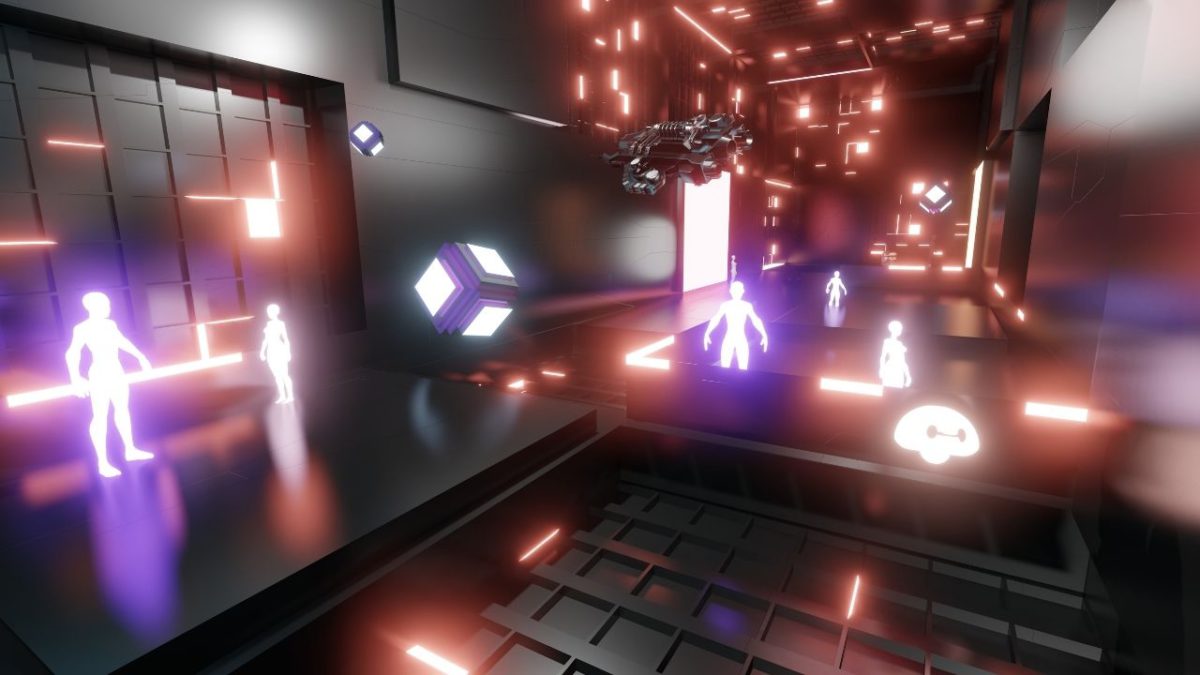How Do You Create Your Own Virtual World in the Metaverse?
Metaverse isn’t just jargon; it’s also one of the most significant technological advancements. Let’s look at how one can create their own virtual world in the Metaverse.
The internet has been one of the most innovative technical innovations in the previous few decades. You can expect the metaverse to take the role of the internet in the future years. The Virtual World in the Metaverse, according to experts, is a 3D version of the internet that users may access using VR and AR technologies.
Many people have been inspired by the excitement around the metaverse to create their own metaverse virtual environment. The Virtual World in the Metaverse has a lot of potential for expanding the virtual world by providing more engaging and immersive experiences than the internet.
Blockchain provided a dependable technological framework for laying a solid foundation for an open, decentralized metaverse. Gaming NFT marketplaces are now demonstrating how the metaverse will evolve into a virtual reality world replica. Many businesses are working on projects in the metaverse, and you may even create your own virtual world there. How?
Creating Animated Virtual Reality for the Metaverse
In a Virtual World in the Metaverse development project, the internet is the established cross-platform technology to seek for. You can use JavaScript to design a VR app that will operate on any VR machine. In addition, producing VR websites would necessitate advanced technologies. Here are a few notable technologies that you can utilize to create your virtual environment in the metaverse.
- Aframe.io is a great example of a tools package that includes rendering and VR scenes in addition to JavaScript and HTML.
- Three.js can assist you in creating more intricate graphics for your virtual world in the metaverse. Remember that Aframe.io supports Three.js, allowing for a seamless development experience.
- WebXR, an amazing Mozilla library with modules for direct VR interactions on the web, is another excellent tool for creating metaverse virtual worlds.
The following is a step-by-step guide to producing an animated VR experience for the metaverse.
- For accessing Aframe.io, add the codes through the Content Delivery Network servers. Begin by utilizing HTML code to create a rudimentary VR scenario.
- Make sure the VR scene has a tag attached to it. As a result, it can assist in the addition of various shapes to the VR scene via applicable tags.
- You can’t use the VR device to move the camera around in the VR scenario by dragging the screen. Three.js is now required to send an HTML file to the VR device.
- Use a JavaScript file to configure an npm project for more flexibility in changing the scene.
Finally, with the last stage of evaluating the animated VR scene, you can learn “How to develop a Virtual World in the Metaverse?” The WebXR API allows you to test the animated VR scene using any web browser, such as Firefox or Chrome. Install the WebXR API in your browser and use the WebXR tab to test the page while wearing the virtual reality headset.
Also, read – Facebook’s New “Metaverse” And What It Means For You?
Important Metaverse Development Standards and Requirements
The internet that you see and use every day is more than just a network. You have a lot of standards for visual content, graphics, data transfer, communication, and a lot of other things. The many protocols form the foundation for real-time communication between servers and browsers. Similarly, metaverse development would rely on a highly durable standard for supporting permanent, seamless interoperability experiences.
Better interoperability across industries can be a benefit of open standards. Some existing standards must be streamlined into smaller sets for individual capabilities in Virtual World in the Metaverse initiatives. Some prominent standards and other important needs for constructing decentralized metaverse platforms are listed below.
- JavaScript, HTML, WebXR, WebGPU Shader Language, WebAssembly, and other open programming languages are required.
- Extended Reality (XR) technologies are critical for combining real and virtual environments as well as human-machine interactions. Smart glasses, virtual reality headsets, scanning sensors, haptic gloves, and industrial cameras are just a few of the XR technologies required for creating metaverse virtual worlds.
- Only huge computer capacity, which can support AI-related jobs, data processing, analytics, and other tasks, may be used to create metaverse virtual world experiences.
- Your proposals for a virtual metaverse environment would also necessitate open and interoperable media and 3D application standards. You’ll need standards to handle text, photos, music, video, and 3D sequences, scenes, and objects in the metaverse.
- The answers to the question “How do you create a metaverse virtual world?” would also include blockchain and smart contracts. Both technologies are required for secure, permissionless, and transparent transactions to take place.
- Three-dimensional simulations with immersive experiences similar to real-world landscapes and surroundings would also be required.
- Most importantly, a metaverse development project would necessitate a decentralized network of high-bandwidth computers. The metaverse’s essential foundations, including real-time connections and decentralized data transport, would be supported by the network.
Stay informed with daily updates from Blockchain Magazine on Google News. Click here to follow us and mark as favorite: [Blockchain Magazine on Google News].
Get Blockchain Insights In Inbox
Stay ahead of the curve with expert analysis and market updates.
latest from tech
Disclaimer: Any post shared by a third-party agency are sponsored and Blockchain Magazine has no views on any such posts. The views and opinions expressed in this post are those of the clients and do not necessarily reflect the official policy or position of Blockchain Magazine. The information provided in this post is for informational purposes only and should not be considered as financial, investment, or professional advice. Blockchain Magazine does not endorse or promote any specific products, services, or companies mentioned in this posts. Readers are encouraged to conduct their own research and consult with a qualified professional before making any financial decisions. The featured image used is just a creative depiction of the title and it does not intend to hurt sentiments of any person or institution. If it hurts anyone sentiments, please do not hesitate to reach out to Blockchain Magazine.

 Bitcoin
Bitcoin  Ethereum
Ethereum  XRP
XRP  Tether
Tether  Solana
Solana  Dogecoin
Dogecoin  USDC
USDC  Cardano
Cardano  Lido Staked Ether
Lido Staked Ether  TRON
TRON  Chainlink
Chainlink  Avalanche
Avalanche  Sui
Sui  Wrapped stETH
Wrapped stETH  Wrapped Bitcoin
Wrapped Bitcoin  Stellar
Stellar  Toncoin
Toncoin  Hedera
Hedera  Shiba Inu
Shiba Inu  Polkadot
Polkadot  WETH
WETH  LEO Token
LEO Token  Bitcoin Cash
Bitcoin Cash  Litecoin
Litecoin  Official Trump
Official Trump  Hyperliquid
Hyperliquid  Bitget Token
Bitget Token  Uniswap
Uniswap  Pepe
Pepe  Wrapped eETH
Wrapped eETH  USDS
USDS  NEAR Protocol
NEAR Protocol  Ethena USDe
Ethena USDe  Aave
Aave  Aptos
Aptos  Internet Computer
Internet Computer  Ondo
Ondo  WhiteBIT Coin
WhiteBIT Coin  Monero
Monero  Ethereum Classic
Ethereum Classic  Cronos
Cronos  POL (ex-MATIC)
POL (ex-MATIC)  Mantle
Mantle  Render
Render  Dai
Dai  Bittensor
Bittensor  Algorand
Algorand 




